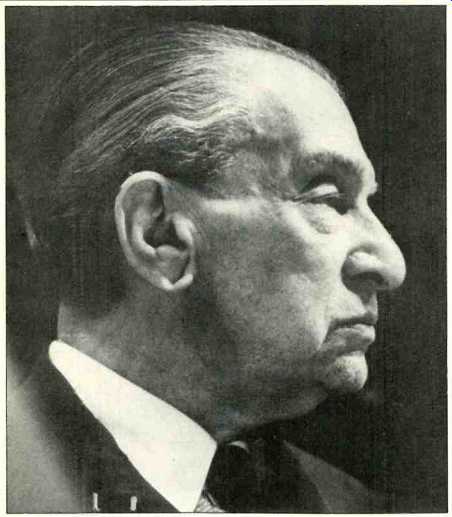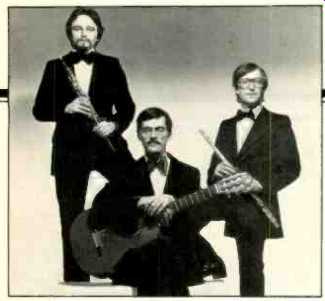
Richard Strauss: Ein Heldenleben.
Fritz Reiner, Chicago Symphony Orchestra.
RCA .5 Series ATL-4100, $15.98.
Sound: A+ Performance: A+ Surfaces: A +
This glorious reissue rates an A+ in several areas, and the first of these is the performance Reiner's 1954 Ein Heldenleben remains one of the very best in the catalog. It shows the Chicago Symphony in top form, performing in one of the best recording venues this country has ever known, old Orchestra Hall, before it was acoustically deadened back in the '60s.
The second A+ mark goes to the quality of the original recording. Made in the very early days of commercial stereo in this country, this was a direct to-two track at 30 ips. According to my 17-year-old notes, the microphone array consisted of a pair of Neumann U47s left and right, and a pair of RCA 44BXs in the center, each feeding one of the stereo channels. This amounts, of course, to a modified left-center right spaced array. In many ways, RCA's mid-'50s 30-ips recording was far better than the quasi-noise-reduced 15-ips AME (Ampex Master Equalization) which RCA adopted for a time during the late '50s. The advantage of the 30-ips technique is its greater headroom on peaks as well as a relatively low noise level.
Some listeners may find this recording a bit unfocused, especially during quieter passages. Others will find its rich ambience a welcome relief from present-day analytical trends in multiple microphone placement. They are all probably right.
The third A+ area is in care in reprocessing, which is evident at the re-mastering stage, where most reissues go wrong. Messrs. Pfeiffer and Begley deserve credit for exercising musical and technical restraint of the highest sort. Since the source was two-track, "remixing" is of necessity minimal; they have corrected some occasional left-right imbalances and done no gratuitous gain manipulation. In the equalization department, a subtle rise in the 2.5 to 5 kHz range has given the sound a little more sheen, at least by comparison with my old 7 1/2-ips two track reference.
Processing quality also rates an A+. RCA has seen fit to have all of their .5 Series reissues processed by Europadisk ( New York) for plating and matrix work and by Teldec ( Germany) for pressing. These extra measures pay off handsomely in the tick, pop, and warpage areas.
The .5 Series liner notes present something of a logical inconsistency.
They point up the merits of half-speed (.5) disc mastering in cutting a more accurate signal on the disc. If this process is good for a 28-year-old master tape, should it not be an absolute requirement for more recent master tapes (especially digital masters), which contain even more demanding high-frequency program detail? There is no indication that half-speed cutting is being generally used by RCA for the bulk of their product.
Many early proponents of half speed cutting have made the transition to real-time. For example, the Tel arc's are now being cut real-time by IAM in Irvine, California, and JVC, once the chief proponent of half speed, has developed a new cutter amplifier package capable of better performance at real-time than their earlier systems yielded at half-speed.

Only Mobile Fidelity remains committed to half-speed cutting; that commitment is consistent, and all their product is cut that way. In RCA's case, the question is not whether half-speed cutting is better or worse than real-time; it is purely a matter of technological consistency.
-John Eargle
Also see:
Audiophile Recordings: Polished Antiques (Sept. 1982)
Top Of The Pile (audiophile recordings) (Feb. 1982)
Remasters of Living Stereo (Aug. 1993)
Re-climbing Everest (remastering recordings of the old Everest label) (Jan. 1990)
============
(source: Audio magazine, Sept. 1982)